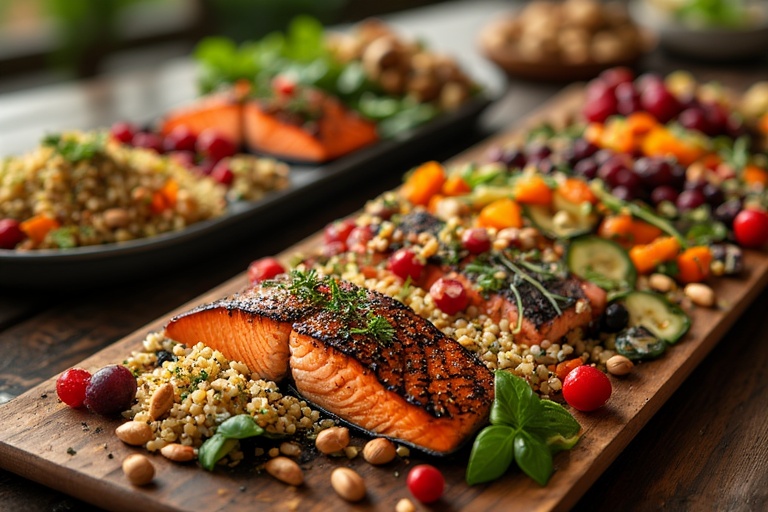Balanced Diet for Adults: Why It Matters, Daily Nutrition Requirements, and Beginner-Friendly Tips
If you’ve ever wondered what a truly balanced diet for adults looks like—and how to start today without giving up the foods you love—this guide is for you. We’ll cover the importance of a balanced diet, daily nutrition requirements, smart healthy eating habits, and practical diet tips for beginners. You’ll also get quick tables, a sample day, and a no-stress grocery checklist. Let’s dig in.

What Is a Balanced Diet for Adults?
A balanced diet provides the energy and nutrients your body needs—carbohydrates, protein, healthy fats, fiber, vitamins, minerals, and fluids—in evidence-based proportions. For most healthy adults, the acceptable macronutrient distribution range (AMDR) is:
- Carbohydrates: 45–65% of calories
- Fats: 20–35% of calories
- Protein: 10–35% of calories The Nutrition Source
What really matters is quality: whole grains over refined carbs, unsaturated fats over saturated, lean protein sources, and plenty of plants.

Why a Balanced Diet Is Important
Eating patterns rich in vegetables, fruits, whole grains, legumes, nuts, and seafood are linked with better heart, metabolic, and overall health. Authoritative guidelines advise:
- Added sugars: keep below 10% of calories (WHO suggests aiming even lower—<5%—for extra benefit). Dietary GuidelinesWorld Health Organization
- Saturated fat: <10% of calories; replace with unsaturated fats. Dietary Guidelines
- Sodium: <2,300 mg/day (AHA’s optimal target is 1,500 mg/day for most adults). U.S. Food and Drug Administrationwww.heart.org
Most people exceed these limits—70%+ of sodium in many diets comes from packaged or restaurant foods—so label-reading and home cooking pay off. www.heart.org
Daily Nutrition Requirements for Adults (At-a-Glance)
Use this as a starting point; needs vary by age, sex, body size, activity, and health status. Discuss changes with your clinician or dietitian.
| Nutrient (Adults) | General Target | Why It Matters | Good Sources |
|---|---|---|---|
| Carbohydrates | 45–65% of calories | Primary energy source | Whole grains, fruit, legumes, dairy |
| Protein | 10–35% of calories; ≥0.8 g/kg/day minimum | Muscle repair, enzymes, immune support | Fish, poultry, eggs, tofu, Greek yogurt, legumes Office of Dietary Supplements |
| Total fat | 20–35% of calories | Hormones, cell health, nutrient absorption | Olive oil, nuts, seeds, avocado World Health Organization |
| Saturated fat | <10% of calories | High intakes raise LDL cholesterol | Limit fatty meats, butter; choose unsaturated oils Dietary Guidelines |
| Added sugars | <10% of calories (WHO: <5% better) | Excess linked to cardio-metabolic risk | Limit sugary drinks, sweets World Health OrganizationDietary Guidelines |
| Sodium | <2,300 mg/day (AHA ideal: 1,500 mg) | Supports healthy blood pressure | Cook fresh; check labels; use herbs/spices U.S. Food and Drug Administrationwww.heart.org |
| Fiber | ~28 g/day on a 2,000-kcal diet (14 g/1,000 kcal) | Gut health, satiety, heart health | Beans, oats, chia, veg/fruit Dietary Guidelines |
| Potassium | 3,400 mg (men) / 2,600 mg (women) | Blood pressure, nerve/muscle function | Beans, potatoes, bananas, greens University of Utah Healthcare |
| Calcium | 1,000 mg (most adults), 1,200 mg (women 51+, men 71+) | Bones, muscle/nerve function | Dairy/fortified drinks, tofu (with calcium), greens Office of Dietary Supplements+1 |
| Vitamin D | 600 IU (15 mcg) ages 19–70; 800 IU (20 mcg) 71+ | Bone/immune health | Sun exposure*, fatty fish, fortified foods, supplements if needed Office of Dietary Supplements+1 |
| Iron | 8 mg (men); 18 mg (women 19–50); 8 mg (51+) | Oxygen transport | Lean meats, beans, lentils, fortified grains Office of Dietary Supplements |
| Vitamin B12 | 2.4 mcg/day | Nerve function, DNA, red blood cells | Animal foods, fortified plant milks/cereals Office of Dietary Supplements |
| Seafood (omega-3s) | ≥8 oz/week (variety, low-mercury) | Heart & brain health | Salmon, sardines, trout, mussels U.S. Food and Drug Administration |
| Fluids (total) | ~3.7 L/day men, 2.7 L/day women from beverages + foods | Hydration, cognition, kidney function | Water, unsweetened tea/coffee, watery foods National AcademiesCDC |
*Sun exposure must consider skin cancer risk; check local guidance.
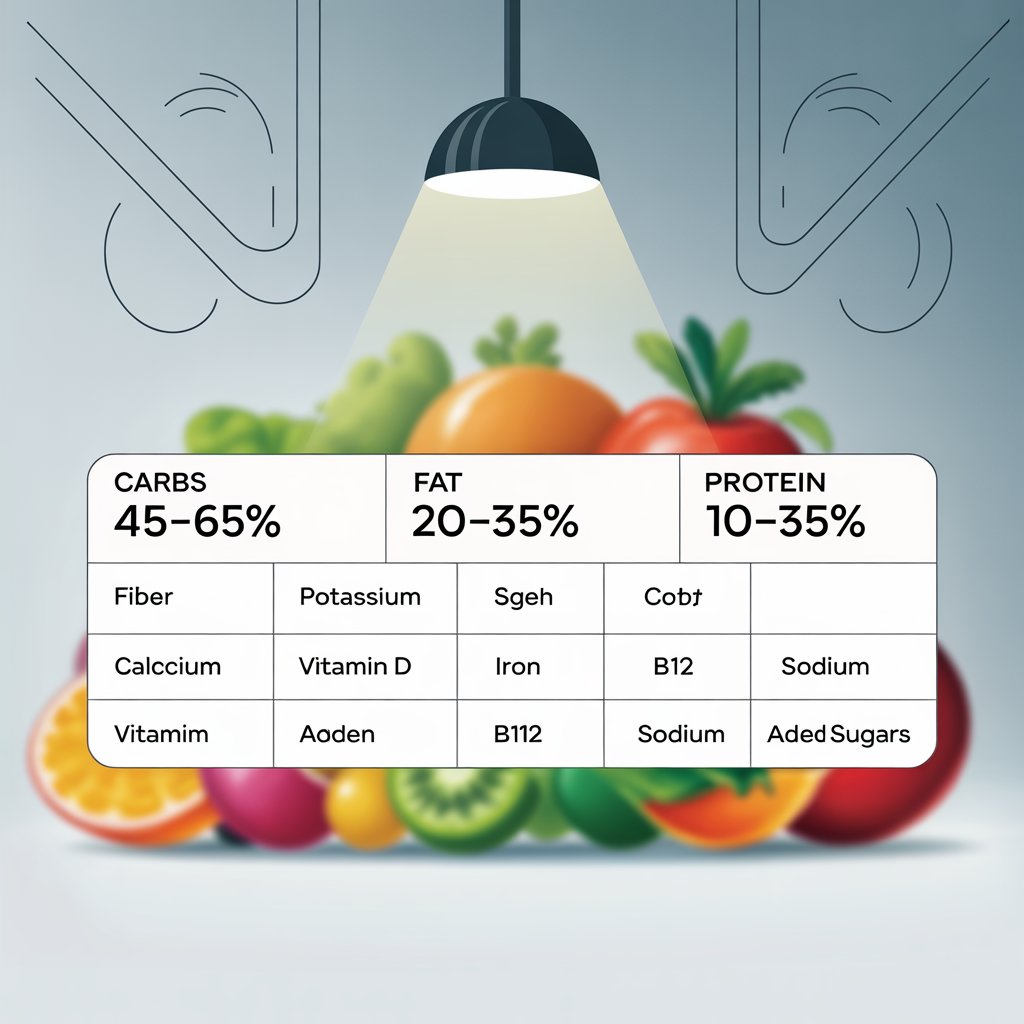
What to Eat More Of (and Why)
- Vegetables & fruits: Aim for ~2.5 cups vegetables and ~2 cups fruit on a 2,000-kcal pattern; more is better for fiber and phytonutrients. Harvard Health
- Whole grains: Choose brown rice, oats, quinoa, whole-wheat pasta/bread; target half of grains as whole. Dietary Guidelines
- Lean proteins: Beans, lentils, fish/seafood (≥8 oz/week), poultry, eggs, tofu/tempeh, yogurt. U.S. Food and Drug Administration
- Healthy fats: Olive oil, nuts, seeds; reduce saturated/trans fats. World Health Organization
- Low-sodium choices: Fresh, minimally processed foods; compare labels to keep sodium down. U.S. Food and Drug Administration
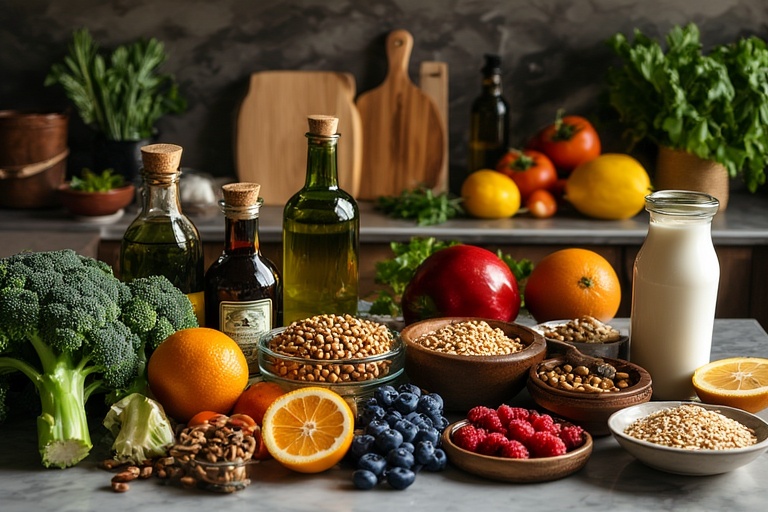
What to Limit (Without Feeling Deprived)
- Sugary drinks & sweets: Keep added sugars <10% of calories (ideally <5%). Swap in fruit, sparkling water, or smaller portions. World Health Organization
- Sodium bombs: Cured meats, instant noodles, salty snacks, many sauces. Rinse canned beans; choose “low-sodium” labels. U.S. Food and Drug Administration
- Saturated fat: Opt for olive oil, nuts, and fish instead of butter, cream, and fatty cuts. Dietary Guidelines
A Beginner-Friendly Plate (Visual Guide)
Imagine your plate like this (lunch or dinner):
- ½ plate: non-starchy veg (broccoli, peppers, leafy greens)
- ¼ plate: lean protein (chicken, beans, tofu, fish)
- ¼ plate: whole grain or starchy veg (quinoa, brown rice, sweet potato)
- Plus: a small portion of healthy fat (olive oil, nuts/seeds) and a piece of fruit or yogurt.
Model inspired by well-established healthy eating patterns. Harvard Health
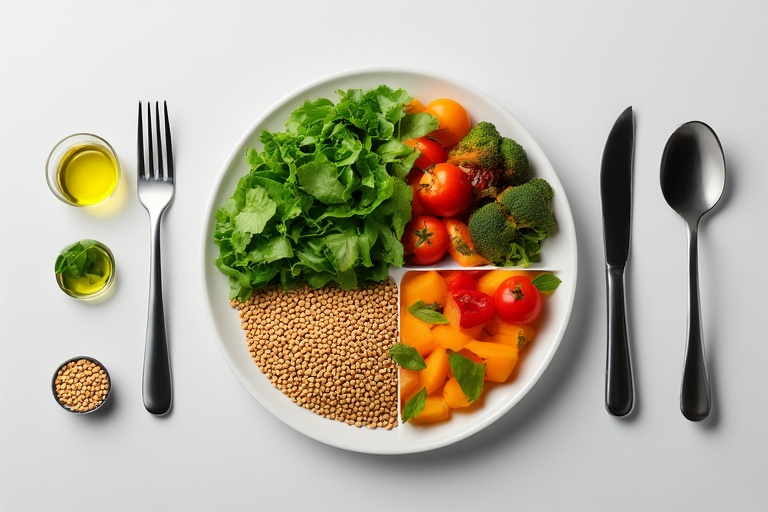
Sample 1-Day Balanced Menu (≈2,000 kcal)
- Breakfast: Greek yogurt parfait with oats, berries, chia; coffee/tea, water.
- Snack: Apple + peanut butter.
- Lunch: Grain bowl—quinoa, chickpeas, spinach, roasted carrots, tahini-lemon dressing.
- Snack: Carrots + hummus.
- Dinner: Baked salmon, brown rice, roasted broccoli; side salad with olive oil & vinegar.
- Hydration: Water throughout the day; unsweetened tea.
This pattern keeps added sugar, saturated fat, and sodium within guideline limits while delivering fiber, protein, potassium, and omega-3s. Dietary Guidelines+1U.S. Food and Drug Administration
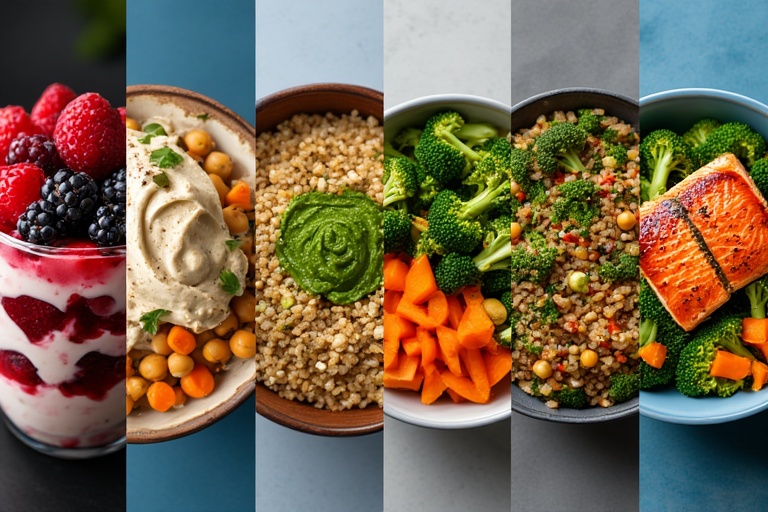
Daily Nutrition Requirements Table (Expanded)
| Category | Target | Practical Translation |
|---|---|---|
| Vegetables | ≥2.5 cups/day (2,000 kcal) | 1 large salad + 1 cooked veg side |
| Fruit | ≥2 cups/day | 2 whole fruits or 1 cup berries + 1 fruit |
| Whole grains | Make ≥50% of grains whole | Oats at breakfast, brown rice or quinoa at meals |
| Seafood | ≥8 oz/week | 2 fish dinners/week |
| Dairy/fortified alternatives | 2–3 servings/day | Milk/yogurt or fortified soy alternatives |
| Legumes | 3–5 cups/week | Beans in soups, salads, or bowls |
| Nuts/seeds | Small handful daily | Sprinkle on salads or yogurt |
| Fluids | 3.7 L men / 2.7 L women (total) | Water bottle goal + watery foods Harvard HealthNational Academies |
Healthy Eating Habits That Actually Stick (Beginner Tips)
| Habit | Why It Helps | How to Start Today |
|---|---|---|
| Plan 3–4 go-to meals | Cuts decision fatigue | Batch-cook grains/beans; frozen veg save time |
| Build a “balanced plate” | Auto-balances macros | ½ veg, ¼ protein, ¼ whole grain + healthy fat |
| Hydrate on schedule | Energy & appetite regulation | 1 glass on waking, 1 each meal, 1 mid-afternoon National Academies |
| Check labels for sodium & sugar | Keeps you under limits | Aim <140 mg sodium per serving (“low-sodium”); skip items with added sugars top-3 on ingredient list U.S. Food and Drug AdministrationDietary Guidelines |
| Swap, don’t restrict | Sustainable change | Soda → sparkling water; fries → roasted potatoes |
| Add fiber gradually | Gut comfort & fullness | +5 g/day via beans, oats, chia; increase water Dietary Guidelines |
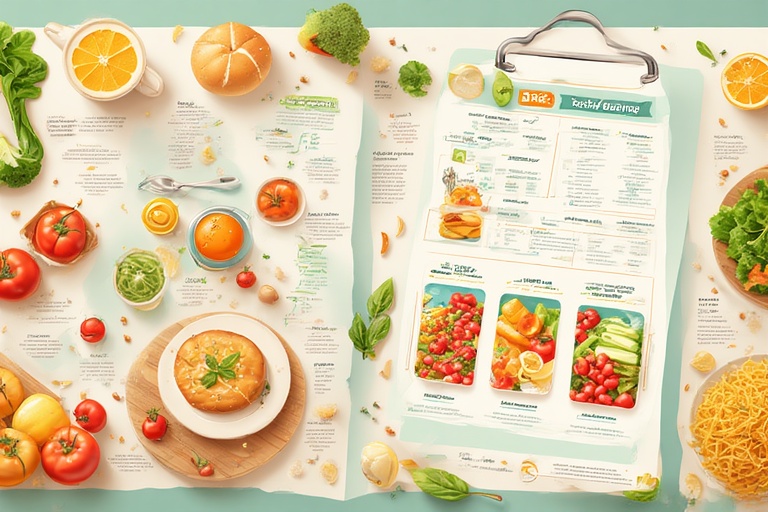
Frequently Asked Questions (FAQ)
1) Is there one perfect “balanced diet” for all adults?
No. Think principles, not perfection: more plants, whole grains, lean protein, healthy fats, and limited added sugars/sodium/saturated fat. Adjust portions to your energy needs, activity, and health status. Dietary Guidelines
2) How much protein do I really need?
Most healthy adults need ≥0.8 g/kg/day (example: ~56 g for a 70-kg person). Athletes and older adults may benefit from higher intakes—speak with a professional. Office of Dietary Supplements
3) What about carbs—are they “bad”?
Carbs are a primary fuel. The AMDR is 45–65% of calories—focus on minimally processed sources (oats, beans, fruit, brown rice). The Nutrition Source
4) How much water should I drink?
A practical benchmark is ≈3.7 L/day (men) and ≈2.7 L/day (women) from beverages + foods, adjusted for heat and activity. National Academies
5) Are snacks okay on a balanced diet?
Yes—use snacks to boost fiber/protein (e.g., fruit + nuts, veg + hummus, yogurt). This can help you stay under added sugar/sodium targets. Dietary Guidelines
6) Do I need supplements?
Food-first is best. Some people (e.g., low sun exposure, certain life stages or dietary patterns) may need vitamin D, B12 (for vegans), or iron (for some women). Test and personalize with your clinician. Office of Dietary Supplements+2Office of Dietary Supplements+2
Common Mistakes to Avoid
- Drinking your calories (sugary beverages) → fast way to overshoot sugar limits. AAFP
- Under-salading your plate (too few vegetables) → missed fiber/potassium targets. Dietary Guidelines
- Ignoring labels → stealth sodium and added sugars in sauces, breads, cereals. U.S. Food and Drug Administration
Quick Grocery Checklist (Copy/Paste)
Veg & fruit: leafy greens, broccoli, peppers, tomatoes, onions, carrots, berries, bananas, apples, citrus
Whole grains: oats, brown rice, quinoa, whole-grain pasta & bread, barley
Protein: beans/lentils, chickpeas, tofu/tempeh, eggs, chicken/turkey, canned tuna/salmon, Greek yogurt
Healthy fats: olive oil, avocado, almonds/walnuts, chia/flax seeds
Flavor: garlic, herbs, spices, lemon, vinegar, low-sodium sauces
Hydration: water, sparkling water, unsweetened tea/coffee
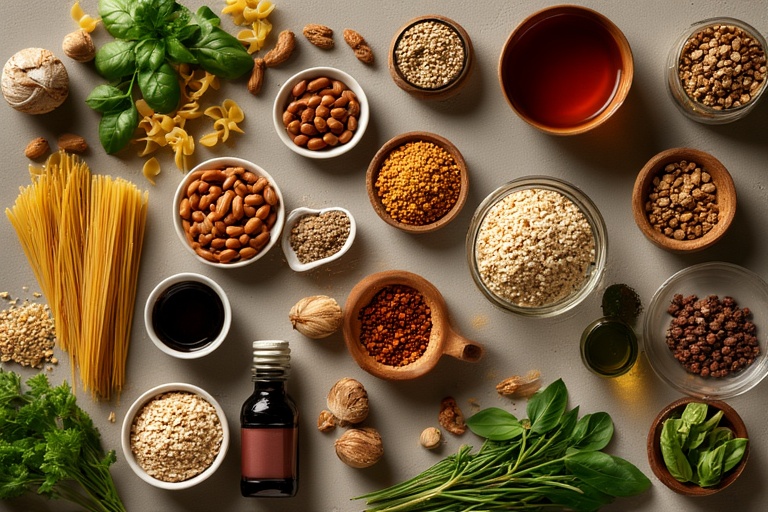
References (Key Sources)
- Dietary Guidelines for Americans 2020–2025 (added sugars <10%, sodium <2,300 mg, healthy pattern highlights). Dietary Guidelines
- Institute of Medicine/NASEM (AMDR; protein RDA 0.8 g/kg). The Nutrition SourceOffice of Dietary Supplements
- WHO (free sugars <10% energy—preferably <5%; fat quality; sodium <2,000 mg). World Health Organization+2World Health Organization+2
- FDA/AHA (sodium guidance; AHA optimal 1,500 mg). U.S. Food and Drug Administrationwww.heart.org
- NIH ODS (Calcium, Vitamin D, Iron, B12 RDAs). Office of Dietary Supplements+3Office of Dietary Supplements+3Office of Dietary Supplements+3
- FDA/USDA (Seafood ≥8 oz/week). U.S. Food and Drug Administration
- Fiber (14 g/1,000 kcal). Dietary Guidelines
Want a personalized 7-day balanced meal plan aligned to your calories, culture, and budget? Tell me your age, weight/height, activity level, and any dietary preferences—I’ll tailor it for you.
